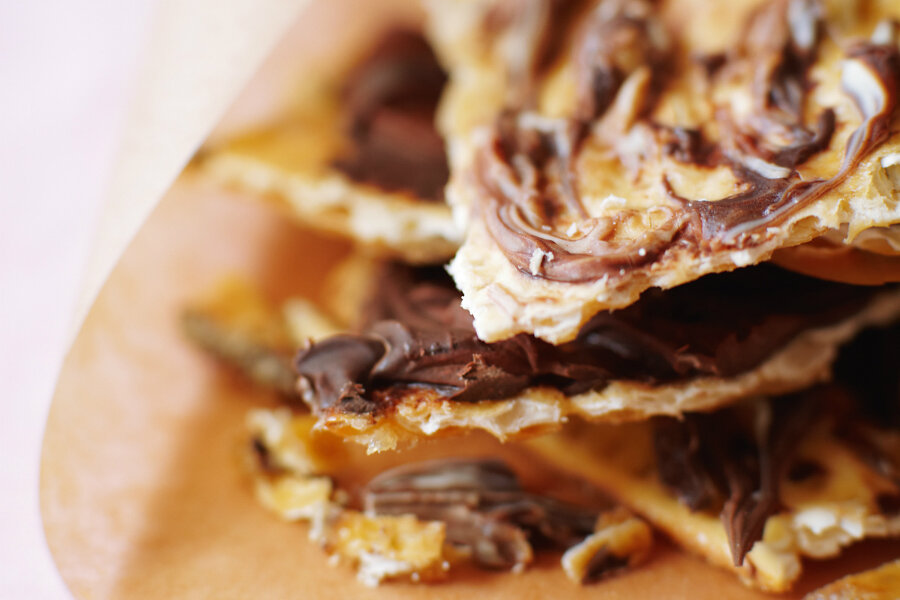The surprising story of how 'Matzoh crack' came to be
Loading...
On the occasion of "A Treasury of Jewish Holiday Baking" (now called "The 10th Anniversary of A Treasury of Jewish Holiday baking," which surely wins the title of the longest cookbook title in history), I thought I’d share with Stir It Up! readers how Matzoh Buttercrunch (more colloquially referred to these days as Matzoh Crack) came to be invented.
It was a light and snowy February day in 1985 and this food writer/freelancer was at home with her new (first of three) baby sons, who, as many toddler sons do, ate next to nothing. Passover was on the way and I thought: What on earth will this child eat that would be quick, easy and suitable for the flour-free zone of Passover?
I had a recipe that is an urban legend in my files – perhaps you do, too? It takes soda crackers or graham crackers, butter and brown sugar. It was lickiety split quick and delicious. I wonder, if I could use matzoh in a similar concept and if it would work? It did. In one shot – and the rest is two decades of Matzoh Buttercrunch/Crack history. It’s not the parting of the Red Sea league of miracle but it has saved the dessert offerings of many a Passover Seder menu.
By the way, if you invented that soda cracker recipe or know who did – please let me know. I’ve searched for two decades. I’d like to thank the inspiration behind my own inspiration. As I freelanced for all major US newspaper food sections (in those days, one could make half-a-living doing that), the recipe traveled from coast to coast, from my little kitchen in Montreal to New York, Boston, Chicago, Miami, Buffalo, Detoit, Los Angeles et al. Then I wrote "Jewish Holiday Baking" and the recipe was installed in all its glory, there.
One day, a rabbi-chef-historian called and asked if she could present the recipe as an "urban food legend" to the Smithsonian.
Absolutely! Now the recipe is always free on my site, www.betterbaking.com or you can find it all over the Internet with beautiful photos to match as bloggers and other food writers adopted the recipe and shared it. I’ve seen the recipe on the back of boxes of the stuff, for sale in delis and bakeries, at Bloomingdales and on "Martha Stewart" and for sure, in cookbooks of others – with and without credit. I think when something is so popular, people assume it is in the public domain. Moreover until recipe writers rewrite copyright law or have some changes introduced, recipes (not their methods or headnotes) are somewhat indeed, "in the public domain."
Have I changed the recipe in 20 years? You bet. I also now make it with white chocolate or just a caramel version (no chocolate). I smear raspberry jam with the melted white chocolate for a springy red/white marbleized version. I also grind up the matzoh crack and use it to coat flour-free chocolate Passover tortes (which do double duty as Easter chocolate cakes). I also simply cut huge shards of the matzoh confection and put it on top of cakes as a very French pastry chef décor.
And I’ve also learned to (a) make four times the recipe because half gets eaten before Passover and (b) hide the rest.







